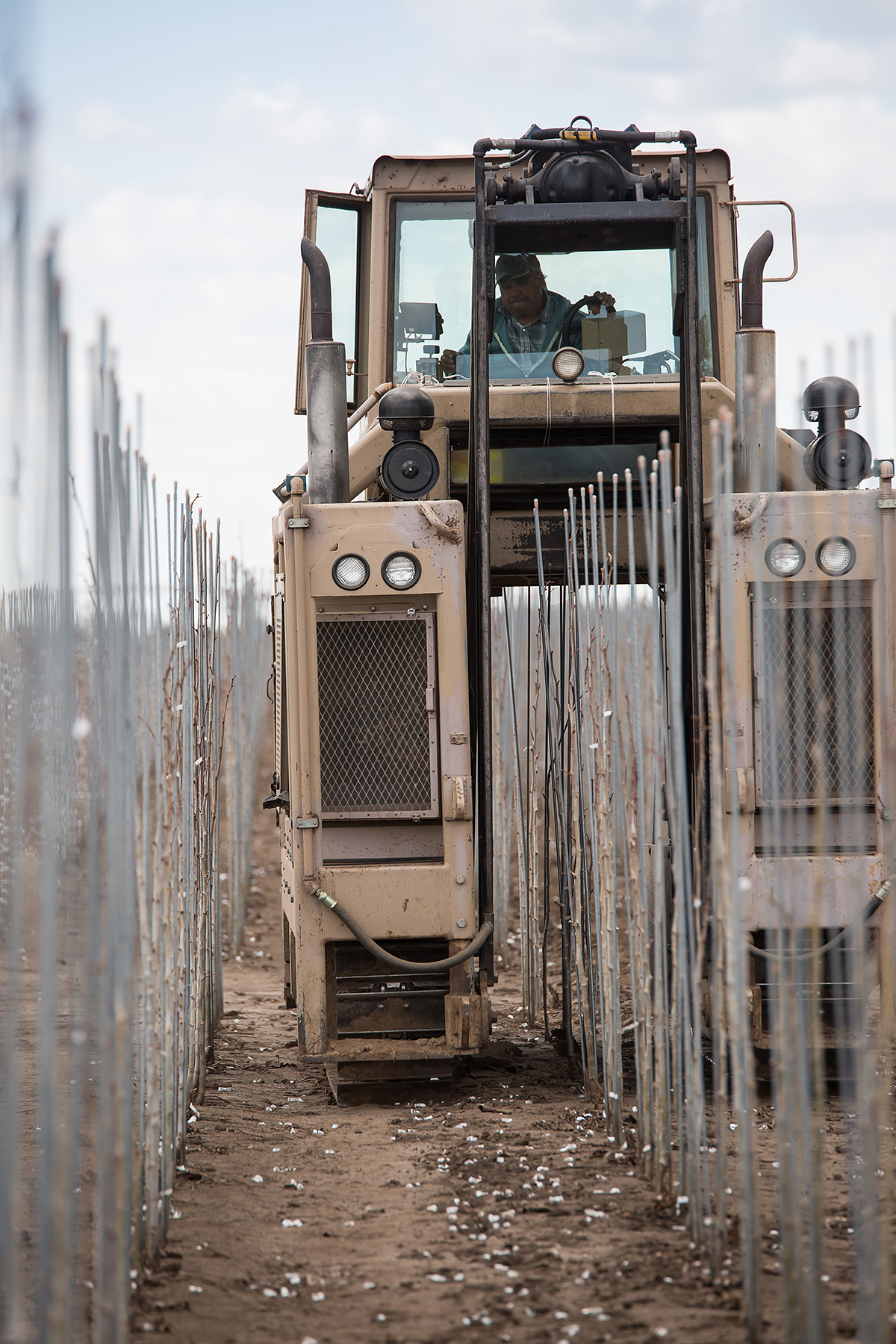Why Undercutting Matters and How it Benefits You

When you’ve been in the nursery business your entire life, you learn which practices truly make a difference. For Jason Bizon, our West Coast General Manager, one of those essential practices is undercutting. It’s a short, intense window of work each fall, but the impact it has on our trees, and on the success of our customers, is undeniable.
Come along as Jason takes us behind the scenes to explain what undercutting is, how we do it, and why it continues to be a crucial step in producing strong, healthy, high-performing trees.
The Start of Undercutting Season
As soon as the fall planting wraps up and the last of the budding tape has been removed from the trees, our diggers prepare for one of our nurseries’ most mandatory tasks. If you guessed digging, you would be half right.
For a brief three-week window, some of our bareroot diggers are outfitted with a large U-shaped blade designed specifically for undercutting. This step prepares next year’s trees and shrubs for harvest by conditioning, cutting, and gently lifting the roots. It also has other beneficial attributes that enhance the quality and livability of those plants for years to come.
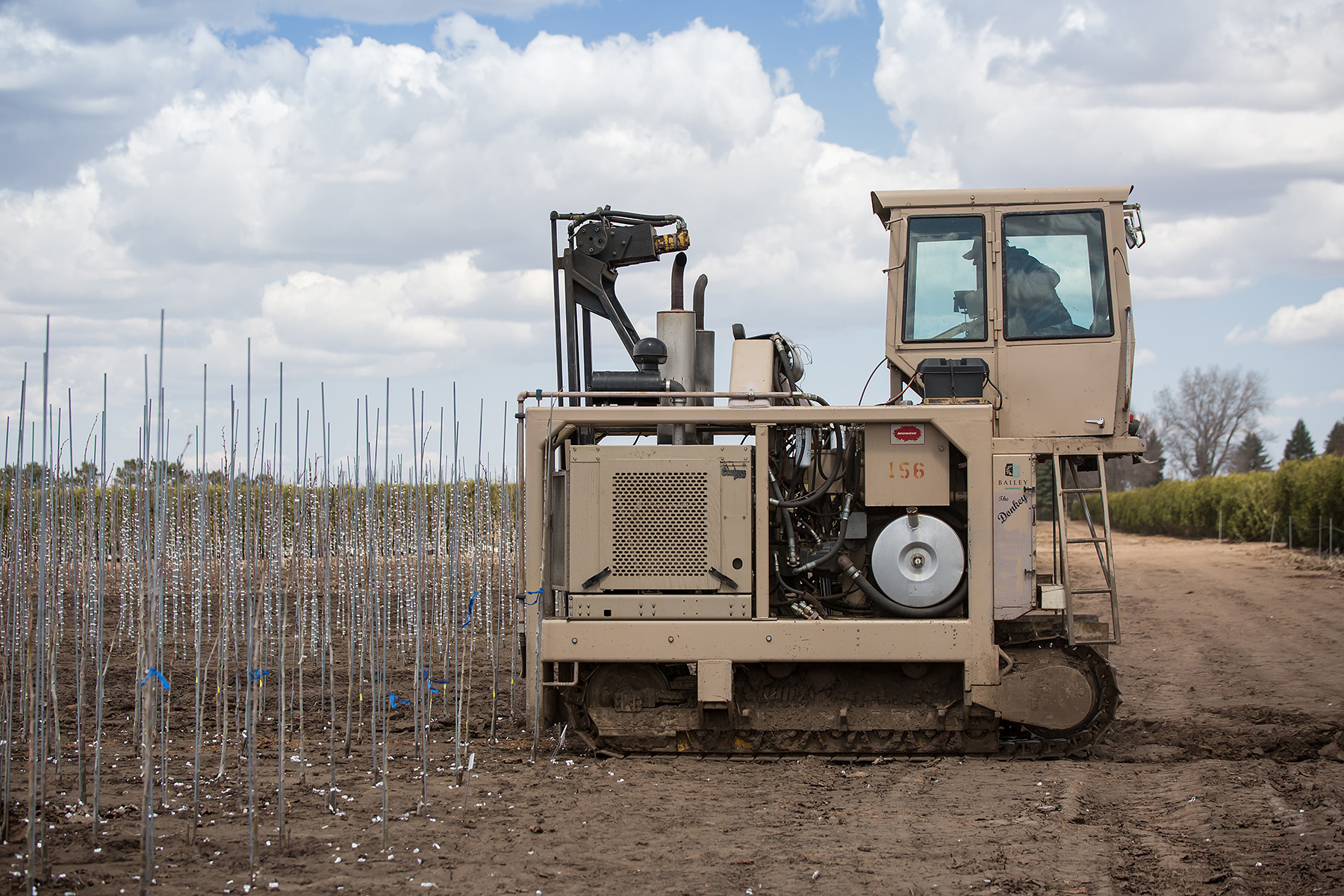
Think of undercutting as a balancing act below the soil line. The goal is to remove just enough root material to encourage better growth, without taking too much. And just like football, undercutting is a game of inches. Once that blade enters the soil, our operators must carefully set the depth to avoid stakes and drip tape, while also choosing the right cut depth for each variety. Depending on the plant, depths can range anywhere from 12″ to 20″. The deeper the blade, the fewer roots are cut.
Since each growing season is different, the ideal depth shifts from year to year. But after years of testing, trialing, and fine-tuning, we’ve developed guidelines that help us get it right before the tracks even hit the field. Once fall rains soften the soil, the operation begins.
What We Learned in the Early Years
When we first started undercutting, our main goal was to reduce transplant losses in varieties that were getting too big in the field. Some tree varieties were simply growing faster than we wanted. They produced large tops and large roots which made handling the trees difficult all around. Undercutting helped bring everything back into balance. But once we began using the practice more regularly, we quickly realized how many other benefits came along with it.
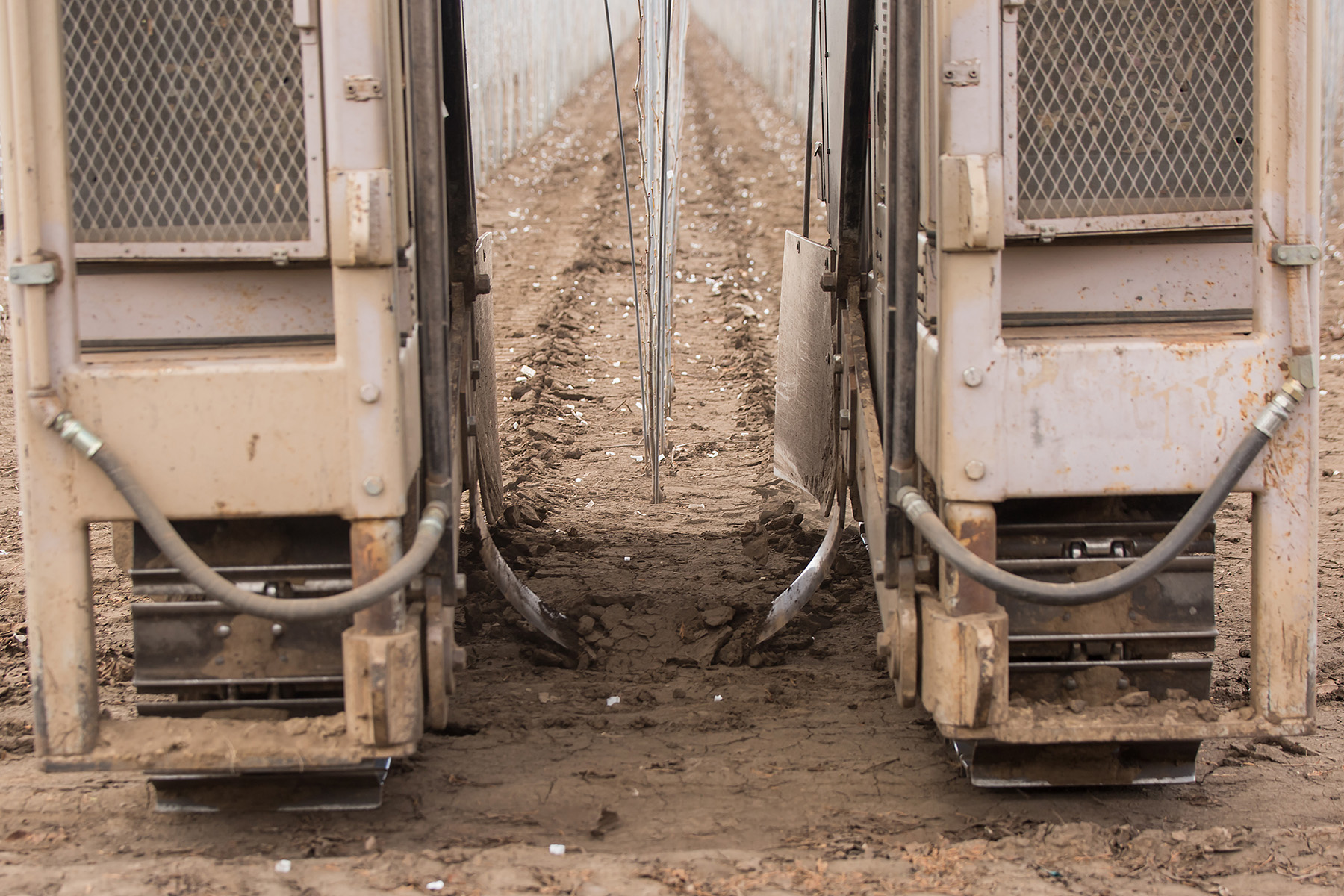
The root systems improved dramatically. We saw more feeder roots, more fine water roots, and overall better structure. The plants developed more consistent caliper, better spacing between internodes, and head sizes that made harvest, storage, and shipping much easier.
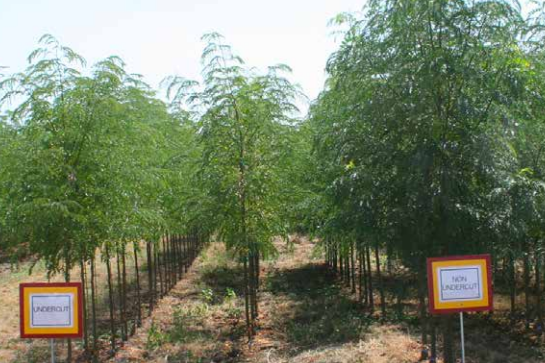
And here’s where growers really feel the difference:
- More compact, consistent plants mean fewer touches and less pruning.
- Stronger caliper with smaller tops allows us to fit more plants on every truck.
- Improved root structure makes planting, in containers or in the field, much easier.
- Better transplant success helped reduce claims and increased overall customer satisfaction.
In many cases, undercut plants even outperformed their non-undercut counterparts of the same variety. It didn’t take long to realize we were onto something.
Which Varieties Benefit the Most?
Some varieties show especially strong improvement from undercutting, and we’ve compiled a list for quick reference.
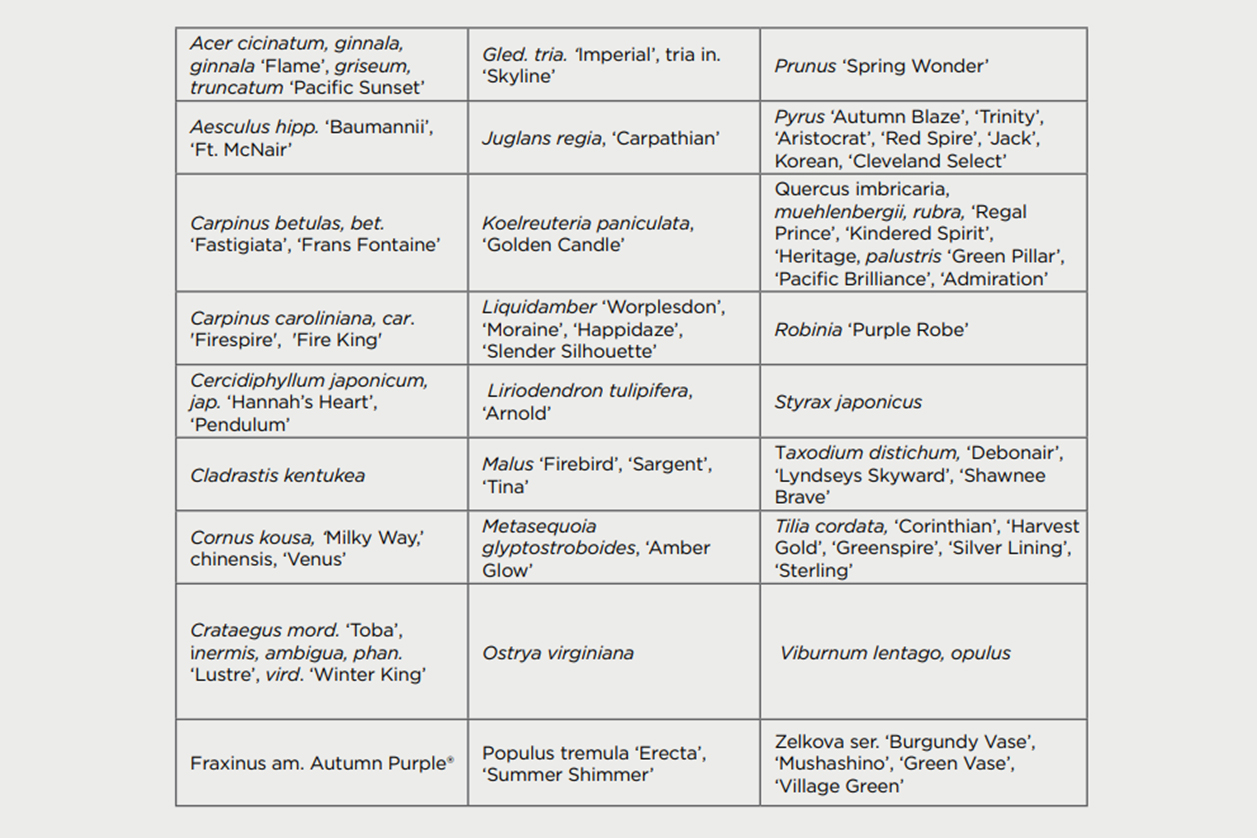
Why Undercutting Matters
Undercutting may be a short seasonal task, but its impact is lifelong. It helps us ship better trees, gives growers stronger starts, and ensures that the end customer receives a plant that’s going to thrive.
For Jason, who grew up in the nursery world, undercutting represents the kind of innovation that supports everyone involved: the nursery team, our customers, and growers across the country.
